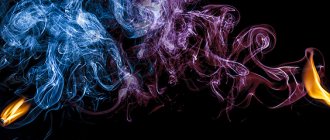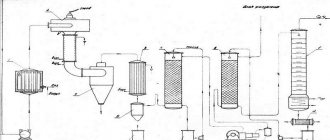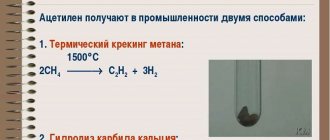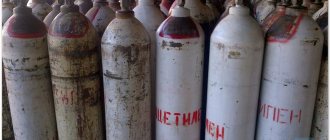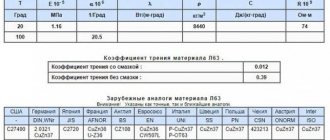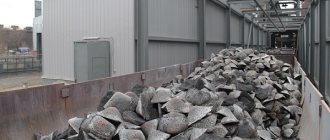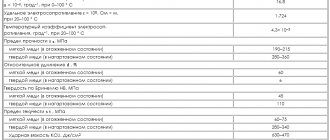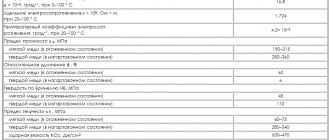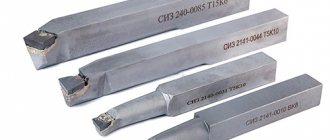Specialists in the fields of medicine, industry, and construction need to know how much an oxygen cylinder weighs. This information is indicated on the container body near the neck. In addition to the weight in kg, the marking contains the manufacturer’s trademark, the mark of the plant and the organization that carried out the inspection, an individual number, the year of the next maintenance, operating pressure and capacity. In order to correctly calculate the amount of gas for work or its remaining volume, pay attention to the information presented below.
Empty weight
Knowing the weight of a gas cylinder and how much an empty cylinder weighs, you can always calculate how much weight the remaining gas has. The weight of a 5-liter oxygen cylinder is 8.5 kg, a 10-liter one is 13 kg, a 20-liter one is 32.3 kg (with a length of 740 mm) and 42 kg (with a length of 770 mm). The listed containers are made of steel grade 45D.
The weight of a 40 liter oxygen cylinder depends not only on its length, but also on the material. The weight of an empty cylinder made of 45D steel is 58.5 kg (with a length of 1370 mm) and 76.5 kg (with a length of 1430 mm). An oxygen cylinder of 40 liters can be made of 30KhGSA steel, then with a length of 1350 mm the weight of an empty oxygen cylinder will be 51.5 kg.
The weight of a 50 liter oxygen cylinder is 71.3 kg (with a length of 1685 mm) and 93 kg (with a length of 1755 mm), provided that we are talking about containers made of 45D steel. A 50 liter oxygen cylinder, made of 30KhGSA steel, weighs 62.5 kg and has a length of 1660 mm.
The 40 liter oxygen cylinder and the shorter 50 liter oxygen cylinder are designed for a pressure of 150 kgf/cm2, while the gas pressure in the longer cylinder is 200 kgf/cm2.
To find out how much an empty oxygen cylinder weighs with a mechanical cap, ring and stability shoe, you need to add 1.8 kg, 0.3 kg and 5.2 kg, respectively, to the indicated weight.
Acetylene
Acetylene
Technical acetylene C2H2 is produced in two types: dissolved, gaseous and must be manufactured in accordance with the requirements of GOST 5457-75* “Dissolved and gaseous technical acetylene. Technical conditions" according to technological regulations approved in the prescribed manner.
GOST 5457 applies to technical acetylene obtained from calcium carbide in stationary generators and it provides for the following grades of acetylene:
— dissolved acetylene grade A — volume fraction of acetylene not less than 99.5%;
— dissolved acetylene grade B, first grade — not less than 99.1%;
— dissolved acetylene grade B, second grade — not less than 98.8%;
— acetylene gas — not less than 98.5%.
Technical dissolved acetylene grade A is intended to power lighting installations, technical dissolved acetylene grade B and technical gaseous acetylene are intended for use as a combustible gas in the flame processing of metals. Acetylene impurities are allowed - air, hydrogen phosphorous, hydrogen sulfide, water vapor.
Dissolved acetylene is a solution of acetylene in acetone under pressure in a cylinder, evenly distributed in a porous mass. Acetylene gas is a colorless gas with a density of 1.173 kg/m3 at 0 °C and 101.3 kPa (760 mm Hg).
Acetylene is an explosive gas. With air it forms an explosive mixture, the lower flammability limit of which corresponds to the gas concentration in the mixture with air equal to 2.5% (by volume) at ( = 25° (GOST 12.1.0041). Since acetylene gas is lighter than air, then in case of leaks in In the upper points of poorly ventilated rooms, an acetylene-air mixture may form.
The auto-ignition temperature of acetylene is 335 °C. Mixtures of acetylene with oxygen or air with a very low acetylene content can explode at atmospheric pressure. Therefore, it is necessary to comply with the mandatory rules for the safe operation of gas equipment when welding with acetylene. Self-ignition of a mixture of pure acetylene and oxygen leaving the burner nozzle occurs at a temperature of 428 °C.
Acetylene is more often used than other combustibles for welding and cutting; it gives the highest flame temperature when combustion in oxygen (3100-3200 °C). Without compromising quality and performance, acetylene is replaced only for cutting with other flammable gases - propane, methane, kerosene vapor, etc. Technical acetylene is colorless, due to the impurities it contains, it has a strong unpleasant odor, is 1.1 times lighter than air, and dissolves in liquids. Being under a pressure of 0.15-0.20 MPa, it explodes from an electric spark or fire, as well as when rapidly heated above 200 ° C. At temperatures above 530 °C, explosive decomposition of acetylene occurs.
Safety requirements. In accordance with GOST 12.1.007-76, in terms of the degree of impact on a living organism, acetylene belongs to the 4th hazard class.
The acetylene content in the air of the working area must be monitored by automatic continuous devices that indicate when the permissible explosion-proof concentration of acetylene in the air is exceeded, as well as periodically using indicator tubes in accordance with GOST 12.1.014-84.
Acetylene production falls into category A for fire hazard, and class B-1 for explosive zones; B-1a; V-1b; V-1g.
Acetylene production premises must have supply and exhaust ventilation.
Compressed nitrogen, carbon dioxide fire extinguishers, asbestos sheets, and sand should be used as fire extinguishing agents.
In industry, acetylene is produced in three ways: the decomposition of calcium carbide (a compound of calcium with carbon - CaC2) with water, thermal-oxidative pyrolysis (decomposition) of heated natural gas with oxygen, and the decomposition of liquid hydrocarbons (oil, kerosene) with an electric arc. For welding and cutting, acetylene is obtained from calcium carbide.
Technical gaseous acetylene is transported through pipelines made of seamless steel pipes manufactured in accordance with GOST 8731-87 and GOST 8734-75. The acetylene pressure in the pipeline should be no more than 0.15 MPa (1.5 kgf/cm2), it is measured by a pressure gauge of accuracy class 2.5 according to GOST 2405-88, the dial of which should have the inscription “Acetylene”.
Pipeline painting is in accordance with GOST 14202-69.
Technical dissolved acetylene is filled into steel cylinders for dissolved acetylene with a porous mass (activated carbon or cast porous mass) and acetone.
In equipment, pipelines and devices operating in an acetylene environment, parts made of copper or copper alloys with a copper content of more than 65% should not be used.
Cylinders must be equipped with special types of VAB valves designed for acetylene cylinders.
VAB valves for acetylene cylinders are usually made of steel. The use of copper alloys containing more than 65% is unacceptable, since upon contact with acetylene, explosive acetylene copper appears.
This acetylene valve has a thread different from other types of valves, which eliminates the possibility of installing it on other cylinders.
The gas pressure in the cylinder must be measured with an acetylene pressure gauge of 4 MPa (40 kgf/cm) with an accuracy class of at least 4 according to GOST 2405-88. The temperature of the gas in the cylinder is taken equal to the ambient temperature in which the filled cylinder must be kept for at least 8 hours.
At a nominal pressure of 1.9 MPa (19.0 kgf/cm2) at 20 °C, the gas pressure in the cylinder in the temperature range from minus 5 to plus 40 °C must correspond to that indicated in the table:
Acetylene pressure in the cylinder depending on temperature
| Gas temperature, ºС | Gas pressure in the cylinder, MPa (kgf/cm2), no more |
| -5 | 1,34 (13,4) |
| 0 | 1,40 (14,0) |
| +5 | 1,50 (15,0) |
| +10 | 1,65 (16,5) |
| +15 | 1,80 (18,0) |
| +20 | 1,90 (19,0) |
| +25 | 2,15 (21,5) |
| +30 | 2,35 (23,5) |
| +35 | 2,60 (26,0) |
| +40 | 3,00 (30,0) |
The residual gas pressure in the cylinder is measured with an acetylene pressure gauge of 0.4 MPa (4 kgf/cm) of accuracy class 2.5 with a scale diameter of at least 100 mm according to GOST 2405-88.
Cylinders from the consumer must be supplied with a residual pressure corresponding to that indicated in the table:
Residual pressure of acetylene in the cylinder
| Gas temperature, ºС | Residual pressure in the cylinder, MPa (kgf/cm2), not less |
| Up to 0 | 0,05 (0,5) |
| From 0 to +15 | 0,10 (1,0) |
| +15 to +25 | 0,20 (2,0) |
| +25 to +35 | 0,30 (3,0) |
Acetone is added to the cylinders to the required level at dissolved acetylene manufacturing plants.
Acetone CH3COCH3. Technical acetone is used as an acetylene solvent in accordance with GOST 2768-84. “Technical acetone. Technical conditions".
According to the degree of impact on the body, acetone belongs to the 4th hazard class. Acetone vapors cause irritation and diseases of the upper respiratory tract. Acetone has a narcotic effect. With prolonged inhalation of vapors, acetone accumulates in the body and can be absorbed through intact skin. Acetone poisoning is possible when inhaling acetone vapor in a concentration exceeding the maximum permissible concentration. The maximum permissible concentration for acetone vapor in the air of the working area is 200 mg/m3.
Acetone grades:
• highest grade - mass fraction of acetone not less than 99.75%;
• 1st grade - no less than 99.50%;
• 2nd grade - no less than 99.00%.
Acetone impurities - water, methyl alcohol, acids. Acetone is a colorless, flammable liquid. Flash point - minus 18 °C; auto-ignition temperature 500 °C. Mixtures of acetone vapor with air are explosive. The flammability limits of acetone vapor in air: lower - 2.2; top - 13% (by volume). The density of acetone is 790 kg/m3. The vapor density of acetone is 2.6 kg/m3, the vapor density relative to air is 2.0.
When in contact with sodium peroxide or chromic anhydride, acetone ignites explosively.
All work with acetone should be carried out using supply and exhaust ventilation away from fire and sources of sparking.
Respiratory protection in emergency situations - gas mask grade A or BKF.
To extinguish an acetone fire, powder fire extinguishers, volumetric extinguishing agents, sand, an asbestos blanket, water and foam are used.
Acetone is used in acetylene cylinders as a solvent for acetylene to neutralize its explosive properties. Under normal conditions, the absorption capacity of acetone as an acetylene solvent is 25 volumes of acetylene per 1 volume of acetone. The solubility of acetylene in acetone decreases with increasing temperature. So, for example, at -20 °C 52 liters of acetylene are dissolved in 1 liter of acetone, and at +20 °C only 20 liters are dissolved.
Acetone is introduced into a cylinder with a porous mass at the rate of 225-230 g per 1 liter of cylinder capacity. Being in the pores of the mass, acetylene dissolved in acetone becomes explosion-proof and can be stored in a cylinder under pressure. The acetylene pressure in the filled cylinder should be no more than 19 kgf/cm2 according to the acetylene pressure gauge at a temperature of 20 °C.
Full cylinder weight
To calculate how much kilogram of oxygen is in a cylinder (or other gas), you can use gas calculators or look at how much a full cylinder weighs in the table. The weight of a gas cylinder with oxygen depends on the volume of gas in the cylinder and the operating pressure. The weight of a full and empty cylinder differs, as a rule, by 8-12 kilograms. The pressure in the oxygen cylinder should not be higher than 14.7 MPa.
For comparison, the weight of a propane cylinder varies between 2 and 21.2 kg. If the mass of an unfilled container for 5 liters is 4 kg, for 12 liters – 5.5 kg, for 27 liters – 14.5 kg, for 50 liters – 22 kg, then the weight of the propane cylinder will be 6 kg, 11 kg, 25.9 kg and 43.2 kg respectively. The pressure for a propane cylinder should not exceed 1.6 MPa.
The weight of an empty 5-liter argon container is 8.5 kg; 10 liter – 13 kg; 20-liter – 32.3 kg (length 740 mm) and 42 kg (length 770 mm). Argon cylinders for 40 liters made of steel 45D weigh 58.5 kg (length 1370 mm) and 76.5 kg (length 1430 mm), made of steel 30 KhGSA - 51.5 kg with a length of 1350 mm; for 50 liters from steel 45D - 71.3 kg (length 1685) and 93 kg (length 1755), from steel 30 KhGSA - 62.5 kg with a length of 1660 mm. To get the weight of a full 40 liter argon cylinder, you need to increase the given figures by 7.5 kg. The weight of a full cylinder of argon having a different volume can be calculated, knowing that the weight of a cubic meter of argon is 1.784 kg.
acetylene cylinder
You can find out how much an acetylene cylinder weighs without gas by weighing it or by looking at the technical data sheet. The weight of an acetylene cylinder for 5 liters is 8.5 kg, for 10 - 13 kg, for 20 - 32.3 kg, for 40 - 58.5 kg, for 50 - 77 kg. The pressure in the acetylene cylinder is 1.5 MPa.
Calculation of propane-butane in cylinders
The parameters and dimensions of oxygen cylinders for propane, butane and their mixtures can be viewed according to GOST 15860-84. Currently, four types of these products are used, with volumes of 5, 12, 27 and 50 liters.
Under normal atmospheric conditions and a temperature of 15°C, the density of propane in the liquid state is 510 kg/m3, and butane 580 kg/m3. Propane in the gas state at atmospheric pressure and temperature 15°C is 1.9 kg/m3, and butane is 2.55 kg/m3. Under normal atmospheric conditions and a temperature of 15°C, 0.392 m3 of gas is formed from 1 kg of liquid butane, and 0.526 m3 from 1 kg of propane.
Let's calculate the weight of the propane-butane mixture in the most common cylinder in construction: volume 50 with a maximum gas pressure of 1.6 MPa. The proportion of propane according to GOST 15860-84 must be at least 60% (note 1 to Table 2):
50l = 50dm3 = 0.05m3;
0.05 m3 • (510 • 0.6 + 580 •0.4) = 26.9 kg
But due to the gas pressure limitation of 1.6 MPa on the walls, more than 21 kg cannot be filled into a cylinder of this type.
Let's calculate the volume of the propane-butane mixture in the gaseous state:
21kg • (0.526 • 0.6 + 0.392 •0.4) = 9.93m3
Conclusion (for the case under consideration): 1 cylinder = 50l = 21kg = 9.93m3
These gases are available from us: propane C3H8
Inspection of gas containers
Inspection is a procedure to determine whether further operation of gas containers is possible and under what conditions it should take place. After the cylinders are accepted for examination, valves and adapters are dismantled, then washing and degassing occurs. Internal and external walls are inspected for dents, corrosion, cracks and other damage. Then the cylinder is cleaned, degreased with hot water detergent or solvents, painted, and checked how many kilograms the cylinder weighs and its capacity. This is necessary to identify thinning of the walls and decide how the cylinder will be used further. If the capacity has increased by more than 1.5%, and the weight has decreased by more than 5%, then the cylinder can be used, but only at reduced pressure levels. If the increase in capacity and decrease in weight are between 30% and 20%, respectively, such cylinders are not subject to further use.
The next step is hydraulic testing. They are carried out at a pressure several times higher than the working one, and make it possible to determine the tightness of containers. Then the cylinder is drained, adapters and valves are mounted on it, and the threads are pressed. At the last stage, the re-examined cylinder is subject to branding.
Application of acetylene
As mentioned earlier, such a compound has increased reactivity.
Accordingly, it is used to synthesize various materials. This can be rubber, ethyl alcohol, carbon black, etc. Acetylene is also used in the production of explosives, rocket engines and lighting equipment. We have already mentioned the fact that when a substance is burned, a significant amount of heat is generated. It is for this reason that acetylene is often used in the process of cutting and welding various metals. The main competitor of acetylene in this area is propane-butane. The latter type of gas is cheaper, but it produces a low combustion temperature.
Cylinders or generators can be used to supply gas during the welding process. The first option is considered more preferable. Standard cylinders designed for 40 liters are recognized as the optimal product. They are painted white. At the same time, “Acetylene” is written on the surface in red.
It is worth noting that only dissolved and gaseous technical acetylene is suitable for gas-flame processing.
itself is filled with a special porous mass , pre-impregnated with acetone. This layer performs 2 important functions.
- Increased safety during work. Thus, the likelihood of fire and explosion spreading over a large area is reduced.
- Increasing the amount of acetylene and accelerating the process of its release. This is possible due to the provision of a significant contact surface between the gas and acetone.
Storage
Oxygen and acetylene cylinders are stored separately from each other. The conditions are the same:
- containers must stand vertically;
- place the cylinders in special stands and fix them;
- the room temperature should not exceed 25⁰C;
- should not be placed near heating devices or open flames;
- batches at the warehouse should not exceed 20 pieces.
Valves on containers with argon in the non-working position must be closed with special caps. As for acetylene cylinders, they are also sorted by volume.
You cannot keep a container nearby that is larger or smaller than the main group.
Use and storage of acetylene cylinders
Not all cylinders are suitable for storing and transporting acetylene. Such equipment must have a special layer of porous mass, and all parts and valves must be resistant to the influence of flammable gas.
It is worth noting that cylinders must be checked periodically:
- upon receipt and before starting welding, you should carefully inspect the product;
- once every 2 years an inspection is carried out by a special company , thanks to a thorough inspection by specialists, it will be possible to ensure that the porous mass is in good condition;
- All cylinders are tested for strength and density every 5 years.
Since structures filled with acetylene are very sensitive to heat, it is necessary to take a responsible approach to their storage and transportation.
- All products must be positioned only horizontally. It is important to ensure that the valves are located above the base.
- There must be a distance of at least 1 m between the warehouse and the nearest heating device.
- For storage, cages are used that can accommodate only 20 cylinders.
- During transportation, all products are covered with material that does not allow sunlight to pass through.
- During the welding process, only a steel pipeline or an appropriate hose can be used to supply gas . The use of copper pipes is strictly prohibited.
Although acetylene is considered quite expensive and potentially dangerous, it is essential during welding. This is explained by the fact that during the combustion of the substance, a flame is formed, the temperature of which reaches 3000°C. To prevent this from leading to negative consequences, it is important to properly store acetylene cylinders and adhere to basic safety precautions.
Valve
The locking device is made of steel. With prolonged contact with copper and bronze, a chemical reaction occurs and acetylenide is formed - a combination of copper with carbon and the release of hydrogen. Copper acetylene can cause an explosion .
The valve is connected to the neck with a clamp. The thread on the fitting is left - counterclockwise.
There are no taps usual for other gas tanks. The valve is opened with a special socket wrench by rotating a square spindle located in an axis along the entire length of the body. The clamp pressure screw has a small hole on one side for the outlet fitting.
Cylinder color
Externally, unpainted acetylene containers differ only in the width of the neck. They have a diameter of 210 mm and a standard support shoe. After painting with enamel in preparation for work, the acetylene cylinder is white . In the upper quarter of the cylindrical part the word “Acetylene” is written in red. Letters 60 - 100 mm high should occupy at least half the circumference of the container.
There is a marking on the cone near the neck. It includes:
- manufacturer's trademark;
- factory mark;
- individual number;
- brand of the organization that carried out the technical examination;
- date of manufacture;
- year of next maintenance;
- operating pressure;
- capacity in liters;
- weight in kg.
The marking is stamped onto clean metal, outlined around the perimeter with red paint and coated with varnish to protect the surface from corrosion..
Device
The acetylene gas cylinder is made from seamless pipes in accordance with GOST 949-73 . Wall thickness 7 – 8 mm. The ends of the container are spherical. The top part has a hole into which the valve is screwed. A cylindrical shoe is placed on the lower part, giving the container stability.
The neck in acetylene cylinders is wider than in others where gas is stored. Through it, the container is filled with a porous mass: cast porous filler, activated birch carbon and basalt fiberglass. The loose substance absorbs acetone well and promotes uniform dissolution of acetylene in it.
Foreman of the acetylene cylinder filling section of the SpetsBallonMash plant Kurnikov A.I.: “The Americans fill the inside of an acetylene cylinder with asbestos cord. At the end of the last century, the Russian Federation abandoned such material as carcinogenic. Small particles of asbestos evaporate along with argon. In Russia, they switched to natural materials that absorb acetone: silk, leather, mineral wool, sawdust. Currently, some manufacturers use asbestos in small quantities as an additive to quartz sand and calcium hydroxide. In Germany, charcoal is mixed with magnesium carbonate and kieselguhr. When purchasing a cylinder, you should pay attention to its filling. Asbestos causes lung cancer."
